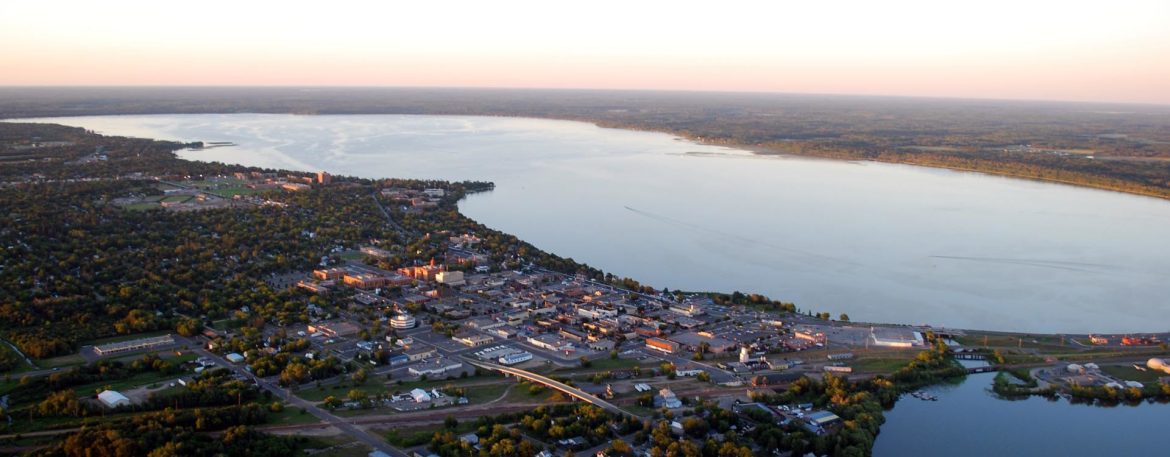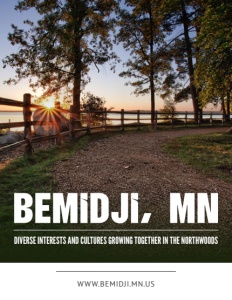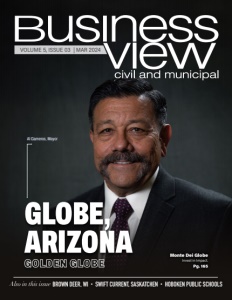The City of Bemidji, Minnesota
Diverse Interests and Cultures Growing Together in the Northwoods
A Charming town set in a region that boasts 10,000 lakes.
Boasting a fascinating history and looking forward to dynamic growth while enjoying an enviable landscape, the town of Bemidji has much to be proud of. The town’s original settlers were Indigenous peoples, arriving in Northern Minnesota after the glaciers’ retreat 10,000 years ago.
In the late 1600s, the Dakota Nation established itself, but the Ojibwe westward migration in the 1700s prompted the Dakota’s southwest relocation.
The name Bemidji comes from the Ojibwe “bemijigamaag” meaning “lake with crossing waters,” referring to the Mississippi River flowing across Lake Bemidji on its way east.
From 1874 to 1897, lumber magnates Thomas Barlow Walker, Charles Ruggles, and John and Charles Pillsbury invested millions in timber claims. Lumber production became the dominant business until disastrous sawmill fires swept through in the 1910s and 1920s.
By this point, loggers had cleared the northern forests and the town’s lumber industry moved to the Pacific coast.
This district is now home to 14,400 citizens. Bemidji functions as the regional hub for Northwest Minnesota. Serving 60,000 customers in a 60-mile (97-kilometer) radius, the city’s daytime population swells to 45,000, three times its official number.
In 2023, Bemidji’s job market increased by 1.9%, with a predicted 29.5% ten-year growth rate.
While all commercial enterprises contribute to the city’s economic vitality, Dave Hengel, Executive Director of Greater Bemidji, credits three anchor businesses for their positive fiscal impact. “One is Sanford Health. This 118-bed healthcare provider has been a part of the town since 1898.”
As the region’s largest employer, Sanford draws in professionals and invests heavily in the community’s well-being and services. “They have contributed hundreds of millions in the last five years,” says Hengel.
Another crucial enterprise tipping the scales of success is Paul Bunyan Communications (PBC), which the region relies on for its high-speed internet network.
Paul Bunyan Communications: Foreseeing Fiber’s Future
Not-for-profit Paul Bunyan Communications is the state’s largest broadband cooperative, servicing 6,000 square miles (9,656 square kilometers) in Northwestern and North Central Minnesota.
“Since 1952, our mission has been to deliver critical communication services not offered by other providers,” says Gary Johnson, CEO, and General Manager of Paul Bunyan Communications.
Supporting remote workers and companies that use extreme data amounts, PBC future-proofs technology, giving Bemidji a competitive national advantage in broadband and speed.
Fiber is state-of-the-art technology and a far-reaching goal for some communities, but Paul Bunyan has installed nothing else since 2004. Johnson states, “Our decision to prioritize the new fiber technology 20 years ago was a bold and successful strategy.”
In 2014, the member-owned cooperative rolled out GigaZone, which offers unprecedented 10 Gbps download speeds. “Over the last few years, we have invested $20 million in fiber. It started here in Bemidji, our hometown,” states Johnson.
PBC provided complimentary broadband to 180 families during COVID-19. It also established a dozen free Wi-Fi hotspots for residents beyond the network’s reach. This initiative ensured internet connectivity for distance learning and telecommuting.
Bemidji native and entrepreneur Erik Hokuf, General Manager of AirCorps Aviation, founded the third financial stimulus.
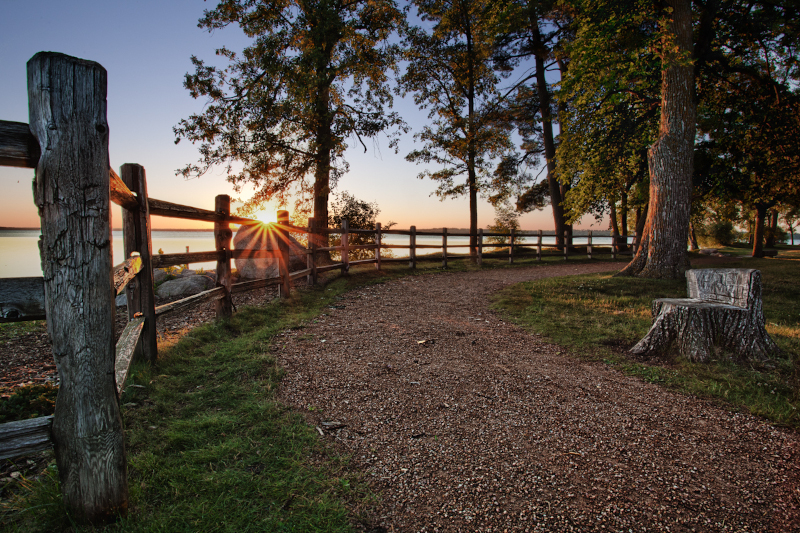
AirCorps Aviation: A Hometown Boy Gives Back
AirCorps Aviation (ACA) specializes in the restoration, maintenance, and rebuilding of vintage World War II (WWII) aircraft.
Since 2011, Bemidji native Hokuf and three other restoration experts, have manufactured parts for all WWII airplane types, current military craft, commercial airliners, and every industry segment. This internationally recognized, award-winning enterprise is celebrated for its unwavering commitment to authenticity and unparalleled craftsmanship.
Hokuf says three assets influence ACA’s bottom line the most. “We touched on one. Paul Bunyan’s fiber internet reliably hooks up our global customers. Gary Johnson’s operation is key.”
The second financial impactor is Bemidji Regional Airport (BJI), also praised for connecting the world.
The last weapon in AirCorps’ arsenal is its people. Their exceptional customer service skills and untapped talent push Hokuf to seek revolutionary innovations. “During our 12-year operation, we have grown from the original four to a team of 63, with a target to add 16 employees next year,” says Hokuf.
Workforce Development: Educating and Keeping Talent
Bemidji undeniably benefits from area resources. The four-year Bemidji State University (BSU) and the two-year Northwest Technical College (NTC) provide the education for the city’s burgeoning employment requirements.
The schools draw professionals, young entrepreneurs, and fresh, bright minds into the community. Prince states, “That is a tremendous asset. Our workforce situation would look quite different without these schools.”
Besides Bemidji’s talent pool, the city is central to three Indigenous nations. The trio of communities each have training centers and expertise at increasing tribal members’ skills. The municipality is unique and fortunate in its partnerships between higher education institutions and native peoples.
Bemidji High School promotes career academics and dabbling in different fields to narrow a student’s interests. Hengel explains how these programs tie into the region’s forecast for employment needs. “We have educated and exported Bemidji’s talent for years, and this aims to stop that trend.”
Commercial Investor Recruitment: Becoming an Aviation Hub
Understanding what advantages Bemidji offers compared to other municipalities and which industries will recognize the region’s competitive edge is crucial when planning corporate recruitment.
The fallout from the COVID pandemic included the mass move to telecommuting and a dire need for broadband or anything data-related.
Hengels acknowledges the amazing benefits Paul Bunyan Communications gives Bemidji. “Gary Johnson had the foresight to begin laying fiber a decade ago. That has been a plus for our remote workers and the companies that employ them for a long time.”
As the wood basket of the upper Midwest, the district’s forests and sawmills create opportunities in wood product manufacturing, sawdust, bark residuals, and biochar.
The thermal treatment of biomass materials like non-salvageable timber, slash, or animal manure produces biochar. Biochar’s diverse applications include water treatment, land reclamation, and carbon sequestration.
These natural resources allow the city to not only enter the emerging world of bio-economy but to conquer it.
Poor location, labor shortages, mismanagement, and other factors often limit midwestern airstrips’ growth potential. But, through its partnership with Delta Air Lines, the city has the potential to transform Bemidji Regional Airport into an aviation hub.
Delta’s commercial services enhance the economy, expand connectivity, and attract new business to Minnesota’s fourth busiest airport.
With Delta’s established 60-country network, the airport gains visibility and accessibility. Hengel says, “This increased traffic bolsters the economy and positions Bemidji as a business nucleus.”
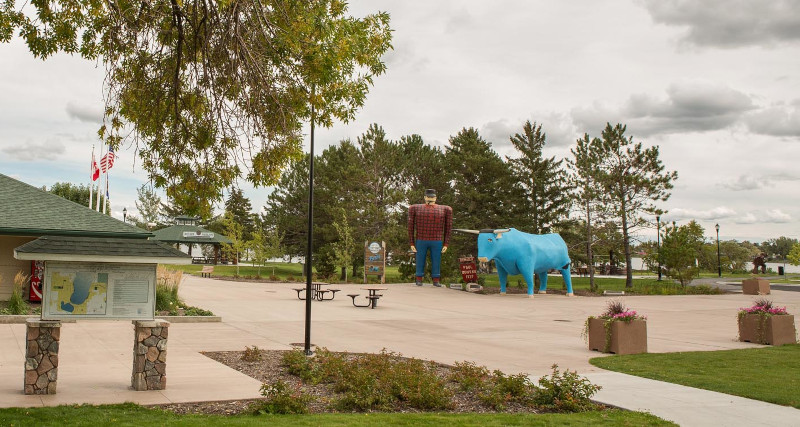
Resources and Recreation: Sharing the Land
Workforce shortages, inflation, and interest rates impact Bemidji’s ability to develop affordable residential properties. Although the city is developing neighborhoods, it struggles to meet the demand.
From Hengel’s perspective, an imbalance exists between what the city can build and what is affordable to current residents and new workers. “The city operates as an urban center in certain ways, bringing income and price challenges.”
City officials want to coordinate and leverage Bemidji’s resources with its Indigenous population’s skills and initiative.
Red Lake Nation, Leech Lake Ojibwe, and White Earth Nation transform rundown apartment complexes into transitional housing and old schools into community centers.
Sharing the land and consulting with those who came before gives people a deep appreciation of the natural wonders and peaceful, untouched landscape experienced by settlers.
Bemidji boasts 18 public parks covering 250 acres and an 8,000-foot shoreline. Relish in the three swimming beaches, boat docks, fishing pier, marina, and picnic shelters. Amenities extend to six baseball fields, eight tennis, basketball, and pickleball courts, and 10 playgrounds.
The Bemidji Town and Country Club is home to the annual Birchmount and Club Vandersluis Memorial Golf Tournaments. Other nearby golf courses include Maple Ridge, Greenwood, and Castle Highlands.
For adventurers, Bemidji’s parks offer 13 miles of trails, ATV/OHVing, a disc golf course, a skate park, and a dog area.
The Mississippi Headwaters in Itasca State Park (a 30-minute drive) is where the mighty Mississippi River begins its knee-deep, 2,348-mile (3,779-kilometer) winding journey to the Gulf of Mexico.
Winter recreational activities include four ice skating rinks, snowmobiling, and downhill and cross-country skiing.
Looking Ahead: Shaping Its Destiny
Bemidji prioritizes two items needing attention in 2024. “Partnering with developers and housing programs will help us start more projects,” says Prince. “We are going to tap into the funds available through the state.”
The mayor and city council will complete a full review of Bemidji’s economic strategy and zoning ordinances. “We want better ways to balance natural asset preservation and economic growth,” states Prince.
Bemidji comes to life through trusted partnerships, innovative enterprises, and a commitment to education and talent retention. The city’s history and future derive from the Indigenous’s resilience and the transformative influence of pioneering industries.
Bemidji has the rare opportunity to hit the reset button, if necessary, and create a long-term vision for a healthy and prosperous future as a Minnesota growth leader.
AT A GLANCE
The City of Bemidji, Minnesota
WHAT: One of PC Magazine’s Top 10 Teleworking Communities in North America.
WHERE: Beltrami County, North-central Minnesota, U.S.A.
WEBSITE: bemidji.mn.us
